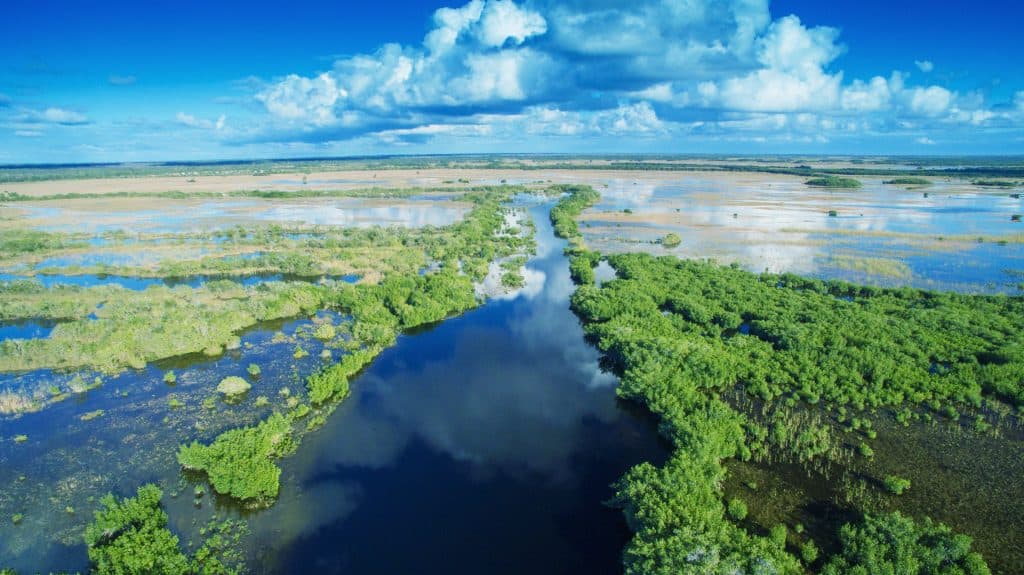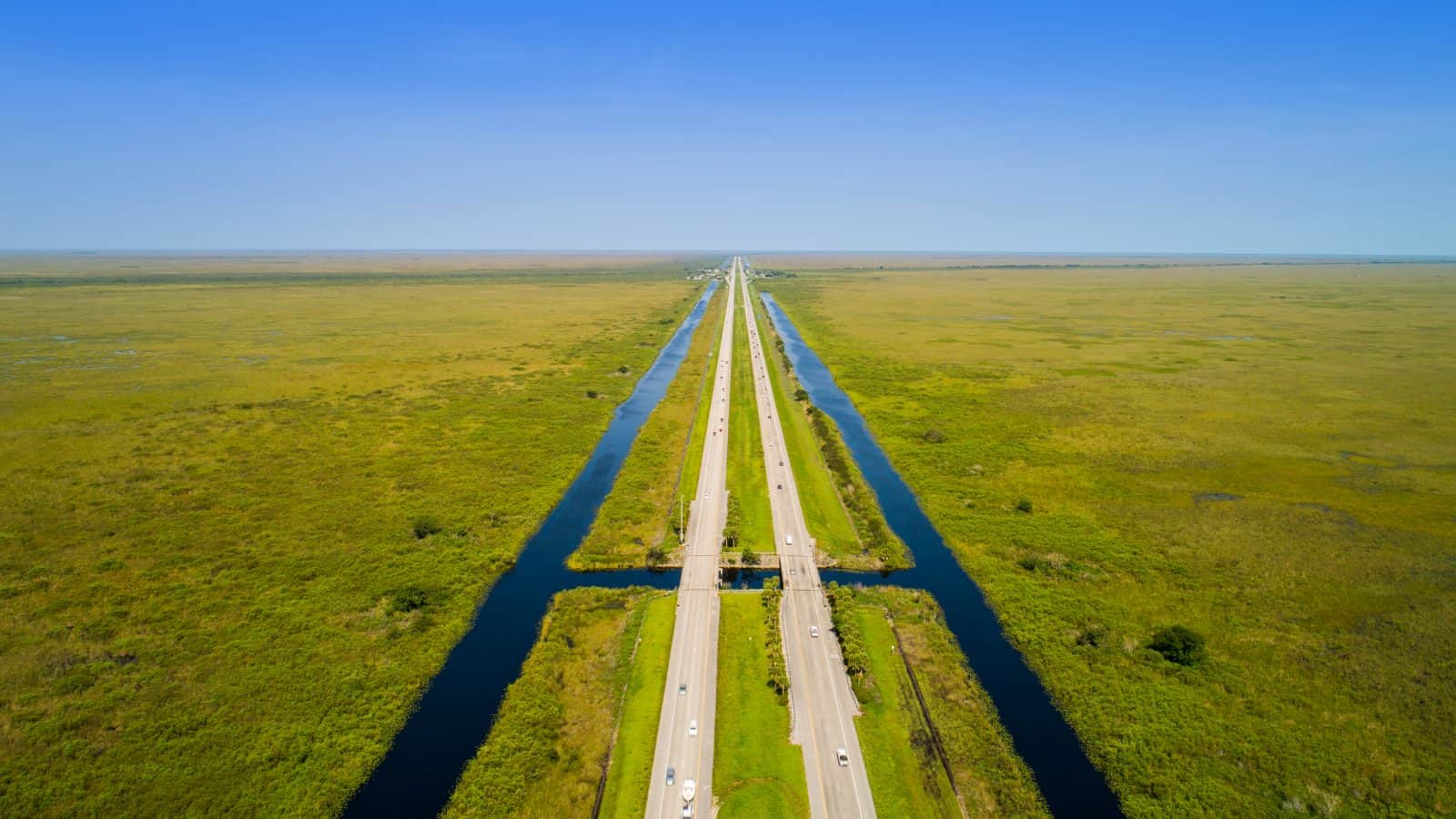If you’ve driven to Miami, then you’ve probably traversed through Alligator Alley in Florida. If you haven’t, then you’ve missed out on one of Florida’s rites of passage!
Stretching across the southern tip of the state, Alligator Alley in Florida is a necessary part of driving in Florida. Many people know this drive all too well in order to obtain cheap flights out of Miami. If you haven’t made the journey yet, we’re here to help. Here’s everything you need to know about driving Alligator Alley in Florida!

What Is Florida’s Alligator Alley?
Alligator Alley in Florida is a stretch of I-75 that spans 80 miles. It cuts through the Everglades between Naples and Fort Lauderdale. It opened in 1968 after many years of arduous construction. Alligator Alley is a popular way to get to Miami Beach for tourists, spring breakers, and even locals.
The road gets its name from the surrounding swamps that Florida’s alligators call home. Due to accidents between wildlife and cars throughout the years, the roadside is fenced off. This protects not only the alligators but also the endangered Florida panther.
In popular culture, the road has been featured in many crime dramas. In movies and shows like Dexter and CSI, Alligator Alley in Florida has been used as a place to dispose of bodies!
Alligator Alley Map
Below is a map of the stretch of I-75 that makes up Alligator Alley in Florida! Sometimes having a more visual idea of where you are going and what you are about to be doing is very helpful when planning your trip! So feel free to save this image. Better yet, you can plot your trip out on GPS beforehand so you can be totally and completely prepared!
As you can see, when you drive Alligator Alley in Florida, you’re driving through gigantic swatches of the Everglades. No matter whether you’re starting in Naples or Miami, you need to be prepared to drive through a whole lot of nothing.
While the trip is scenic because the Everglades are lovely, you need to be prepared. There are very few rest stops, so you should look up where they are just in case! Make sure to fill up on gas and use the bathroom before you embark on your journey.
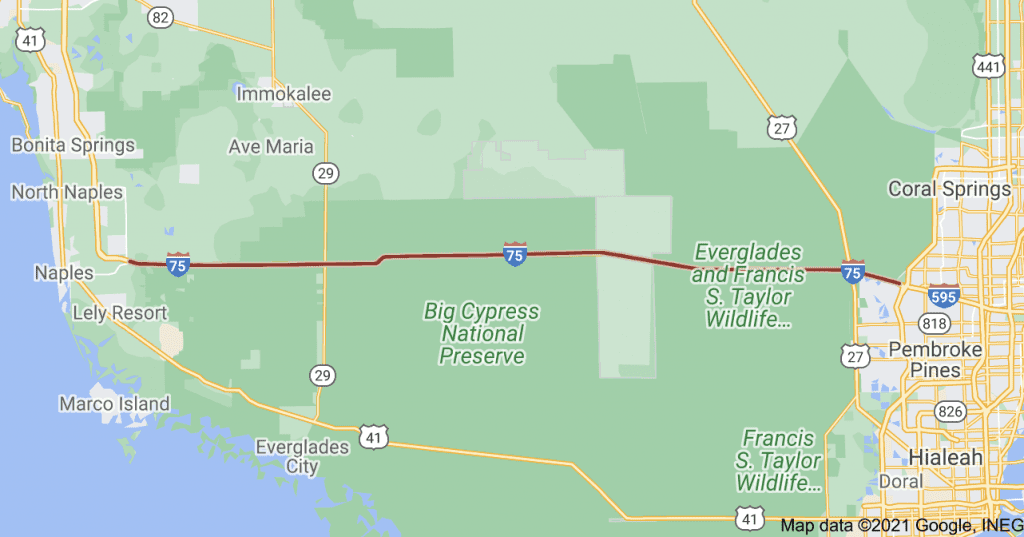
8 Things To Know Before Driving Alligator Alley In Florida
Be Ready to Pay a Toll
The toll for Alligator Alley in Florida costs $3.25 for a 2-axle vehicle as of March 1, 2020. Tolls are collected in both directions. The highway’s toll plazas accept both cash and transponders and are found at either entrance to the road.
If you’re doing a lot of traveling in Florida and want to save some money? Consider purchasing a SunPass transponder. You can order one by mail from the Florida Department of Transportation for only $4.99. You simply affix the SunPass Mini Sticker Transponder to your windshield and you’ll recoup your purchase almost immediately!
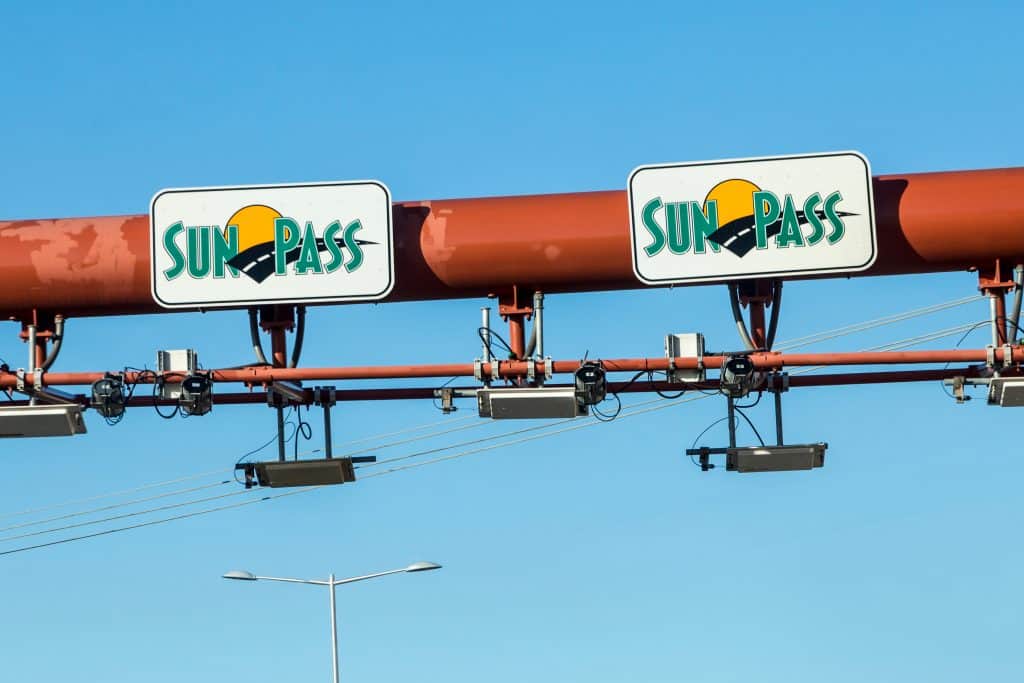
Fill Up On Gas
While you’re on the 80-mile stretch that is Alligator Alley in Florida, you’re going to need to have a full gas tank. This is because there are NO gas stations along the road! So you need to fill up early before you get on the road. If you’re overly cautious, you can always keep a backup gas canister in your trunk.
If you’re coming from Naples, there is a Marathon station before you get onto the highway. If you’re coming from Miami, look out for a Shell station before you get on the highway. There is a Miccosukee Service Station in the middle of Alligator Alley in Florida, but be prepared to pay double for your fuel.
Plan Your Rest Stops Ahead Of Time
If you’re not planning on driving all of Alligator Alley in one fell swoop, there are rest stops available along the road. Keep in mind that it is illegal to sleep at rest stops in Florida. You can park overnight, but keep an eye out for signs that may warn against it at certain stops.
Sometimes nature calls, especially if you’re traveling with little ones! In addition to the Miccosukee Service Station, there are rest stops in Broward County and Collier County. Keep in mind you might have to drive for 30 minutes or so before arriving at one!

Eat Before You Go
While there are rest stops along Alligator Alley in Florida, none of them serve food. If you anticipate getting hungry along the drive, you should eat in advance before you pass the toll plazas. If food is a must for the drive, it is certainly not a bad idea to pack a cooler with snacks and drinks to keep you sated!
There is a convenience store in the middle of the state on the Miccosukee reservation, where you can also get gas. Expect to see snacks and finger foods here, but there’s nothing you can purchase here that will satisfy your hunger as well as a full meal could.
If you pack a cooler, remember to bring plenty of water and fluids. Not only will you stay hydrated, this is a handy trick just in case you break down on the side of the road. It could take some time for roadside assistance to get to you, so you always want to be prepared. You should also pack healthy snacks, and maybe even a sandwich or two.
If you plan to eat before you make the drive, check out the Fat Tap Beer Bar & Eatery in Fort Lauderdale. On 830 E Oakland Park Blvd, you won’t just find a well-curated selection of beer here. You can also grab a tasty Cuban sandwich or choose from an array of delicious flatbreads. Don’t be afraid to grab your food to go either!
Don’t Speed
Don’t be fooled by the secluded feeling of Alligator Alley in Florida. This is a favorite spot for State Troopers to lurk. If you’re speeding, they will pull you over and they will not hesitate to ticket you! 22,500 vehicles a day travel Alligator Alley, you don’t want to be one of those vehicles that have to pay a speeding ticket!
Because it is filled with long, wide-open stretches of road, you will be tempted to speed. Unfortunately, deadly car crashes are known to accompany such high speeds. Alligator Alley’s speed limit is 70 mph. Statistics show that 84% of traffic drives at 84 mph, and troopers routinely clock drivers exceeding 90 mph.
If you have a lead foot or a tendency to speed, there’s a new system in place to help you remember to curb your speed. New electronic signs will clock your speed and post electronic messages on signs above the highway. You’ll be alerted if you’re going even 1 mph over the posted 70-mph speed limit!
Be Careful Driving At Night
Just like driving during the day time, you should always take caution when driving in Alligator Alley at night. Contrary to popular belief, it is in fact safe to drive the stretch of highway at night.
Keep in mind that the road is only lit by lampposts and the headlights of other cars. It can and will become very dark. While there are fences that keep animals away from the street, some do manage to escape, so keep an eye out.
If you are remotely sleepy, you should avoid driving on Alligator Alley in Florida. There are only lights on either end of the stretch of road. The middle can be very dark, and if you feel drowsy, the darkness can and will affect you! Either have another driver with you that can take over. Better yet, wait until morning and then you can make the journey when you’ve had your morning coffee!

Stay Away From Nests
You should always stay away from animals on Alligator Alley in Florida and never try to run over them if they’re on the road. You should also keep an eye out for Alligator nests.
Alligator nests look like large piles of dirt and leaves. They can be seen throughout the spring and summer. If you or your car get too close to a nest, the female alligator will most likely try to protect her eggs. Be careful, sometimes they cannot be seen.
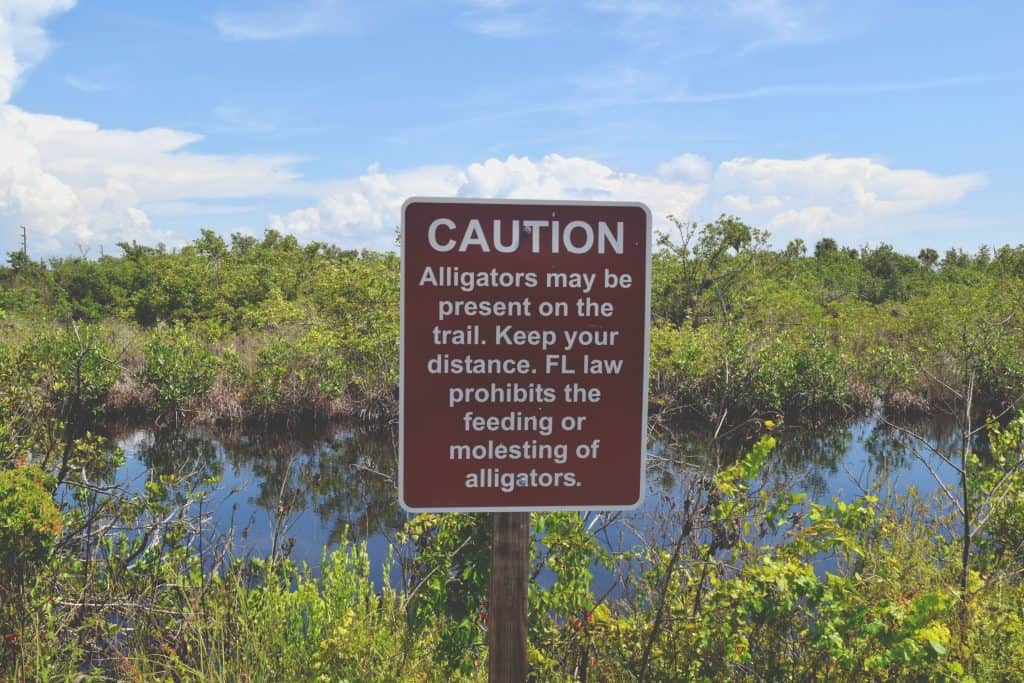
Keep Your Distance and Don’t Get Out Of Your Car
While it is fairly uncommon, sometimes alligators will appear sometimes on the road. If alligators sense that a car is too close to them, they do have a tendency to attack. Never try to run an alligator over with your car, as it is punishable by law.
Stay at least 30 feet away from an alligator and never try to move them yourselves. It is best to call and wait for professionals to move the alligators from the road if you can’t safely drive around them. Never try to take matters into your own hands. Be nice to them, and they’ll most likely ignore you!
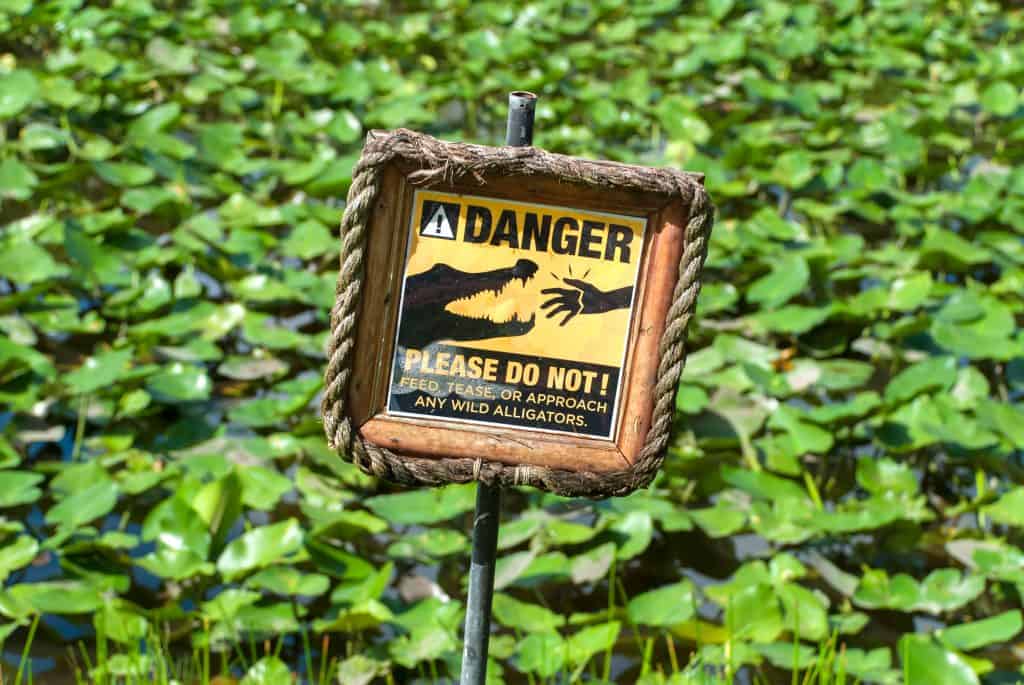
Have A Backup Plan
While the motto of the Boy Scouts may be “Be Prepared,” it’s a good mantra to adopt all the time. It’s not uncommon to see cars stalled on the side of the road. Maybe they’re having engine trouble or they ran out of gas, but don’t let it happen to you!
It’s not a bad idea to have AAA or roadside assistance as well as a fully charged cell phone on hand. If you can, take your car to your mechanic for a check-up before making the drive. Keep a few items in your car like blankets, flashlights, and jumper cables just in case the worst happens!
